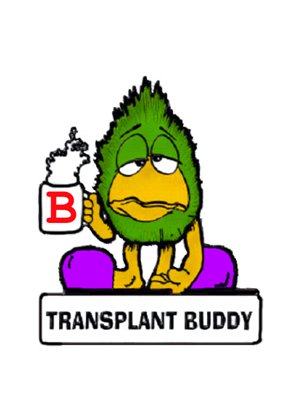Today's support meeting had a presentation on exercise and transplant by the wonderful folks at Pulmonary Rehab. The handout that was given is below. Feel free to send any follow up questions or concerns to my email and I willl work to get the answers.
Thanx again to Bill and his staff for taking the time to educate and help us.
Exercise and Chronic Lung and Heart Disease
The primary aim of exercise training is dependent on the individual’s goals. Common health and fitness benefits include:
· Increased muscle mass and/or tone
· Improvement in cardio-respiratory endurance
· Improvement in muscular strength and endurance
· Improvement in the immune system
· Reduction in risk of cardiovascular disease
· Reduction in risk of osteoporosis
· Increase in life expectancy
· Increased sense of well being
For the individual awaiting heart or lung transplantation, exercise training will improve functional capacity and help get through the surgery and onto the road to recovery optimally. Muscles that are “in shape” will allow you to get back on your feet after surgery.
The question is often asked, “Which is the best type of exercise?” The answer is fairly simple: Remember the goal is for exercise to be both safe and effective. So, pick an activity of the proper intensity and duration that you enjoy enough to perform regularly. Many activities in which we engage are stop-and-go in nature: yard work, gardening, housework, occupational activities, shopping, etc. Activities like bowling and golf, while recreational in nature, also fall into this category. While it is true that one can get fatigued from these types of activities, they are not a good choice for therapeutic exercise. You are encouraged to participate in all types of physical activity, but these low intensity stop-and-go activities should not be substituted for your regular exercise sessions of moderate to somewhat hard intensity.
The type of exercise that is most effective for most adults, especially those with chronic health issues, are activities such as walking, jogging, swimming, cycling, cross country skiing, in-line skating, stair stepping, aerobics classes, etc. These activities are aerobic in that they are continuous and the pace is one that is easily maintained for at least 20 to 30 minutes. One must choose the activities that are most appropriate, considering the level of exertion and the risk of injury that accompanies those activities. Sports we engage in as kids and young adults (football, basketball, soccer, tennis, etc.) are anaerobic. That is, they are stop-and-go in nature, but are of high intensity and therefore subject us to pushing our heart and muscles too hard.
Strength training with weights or Therabands can also be helpful in increasing metabolic rate (assisting with weight loss) in addition to strength.
A cardiopulmonary exercise test is the most accurate method of determining an exercise prescription. This is the amount of exercise that is both safe and effective for your needs. A target heart rate can then be determined according to that individual’s cardiopulmonary capacity and any drug side effects. An individual who undergoes heart transplantation will not have a target heart rate prescription because of the blunted heart rate response after transplant.
* Whether or not it is appropriate for you to exercise as you await transplantation should be determined by your physician.
Aerobic Exercise Prescription
Warm-up: _______________ for 3-5 minutes at an easy pace – one at which you feel you could go on indefinitely. (RPE of 1-2)
Conditioning: _______________ for _______ minutes. Exercise at a level which you consider to be moderate to somewhat hard (RPE of 3-4); healthier, more motivated individuals may even push to a level of hard (RPE of 5). It is reasonable to expect some shortness of breath, muscle fatigue, and even perspiration. Your target heart rate has been established as a range of _______ to _______ beats per minute. You may increase your duration by ____ min.(s) every ____ session(s) until you reach a goal of _______ min.(s)
Cool-down: _______________ at a very easy pace for 3-5 minutes before stopping.
The frequency of exercise needs to be a minimum of 3 times a week to be effective. A goal of 5-6 times a week is even more productive.
Fortunately, it’s not necessary to check your heart rate every time you exercise. Once you have experienced exercise at your target heart rate range, you can rely on your feelings of perceived exertion to determine exercise intensity. Simply ask the question, “How hard am I working?” on a scale of 1-10. Heart transplant patients will use this method to adhere to an exercise intensity that is appropriate.
Rating of Perceived Exertion
0 Nothing at all (Resting)
0.5 Very, very easy
1 Very easy
2 Easy
3 Moderate
4 Somewhat hard
5 Hard
6
7 Very hard
8
9
10 Very, very hard
Maximal
Subscribe to:
Post Comments (Atom)



This comment has been removed by a blog administrator.
ReplyDelete